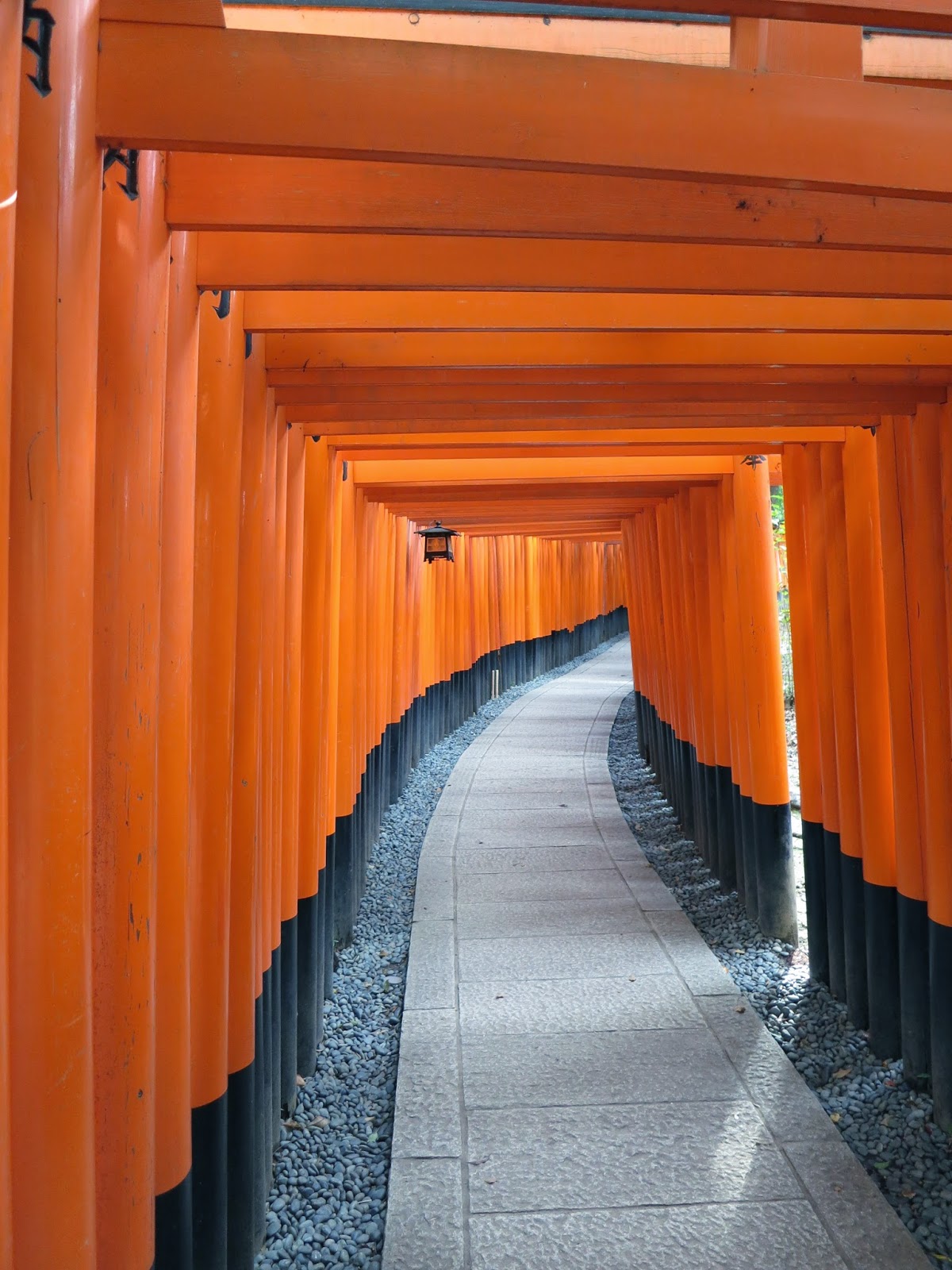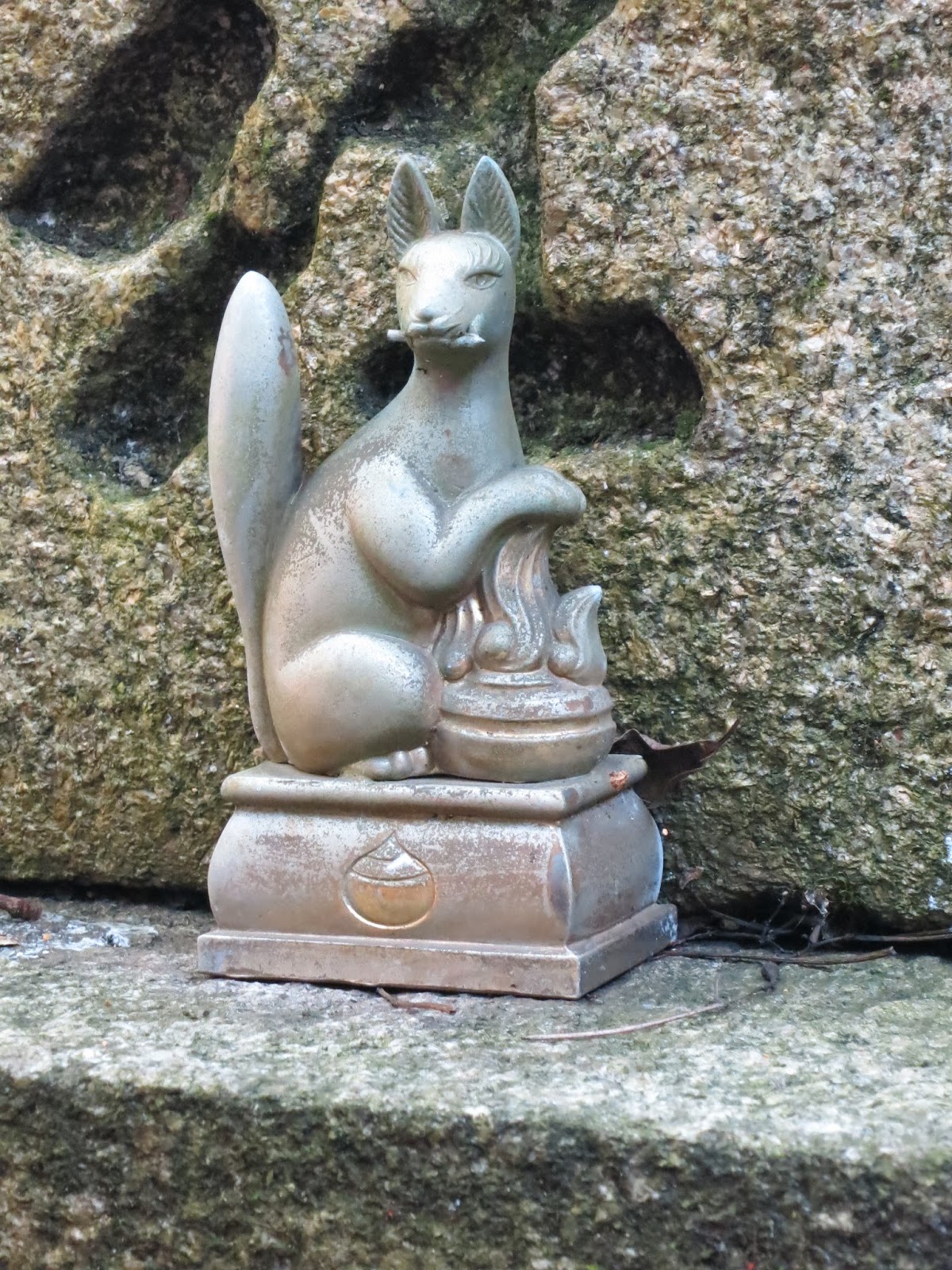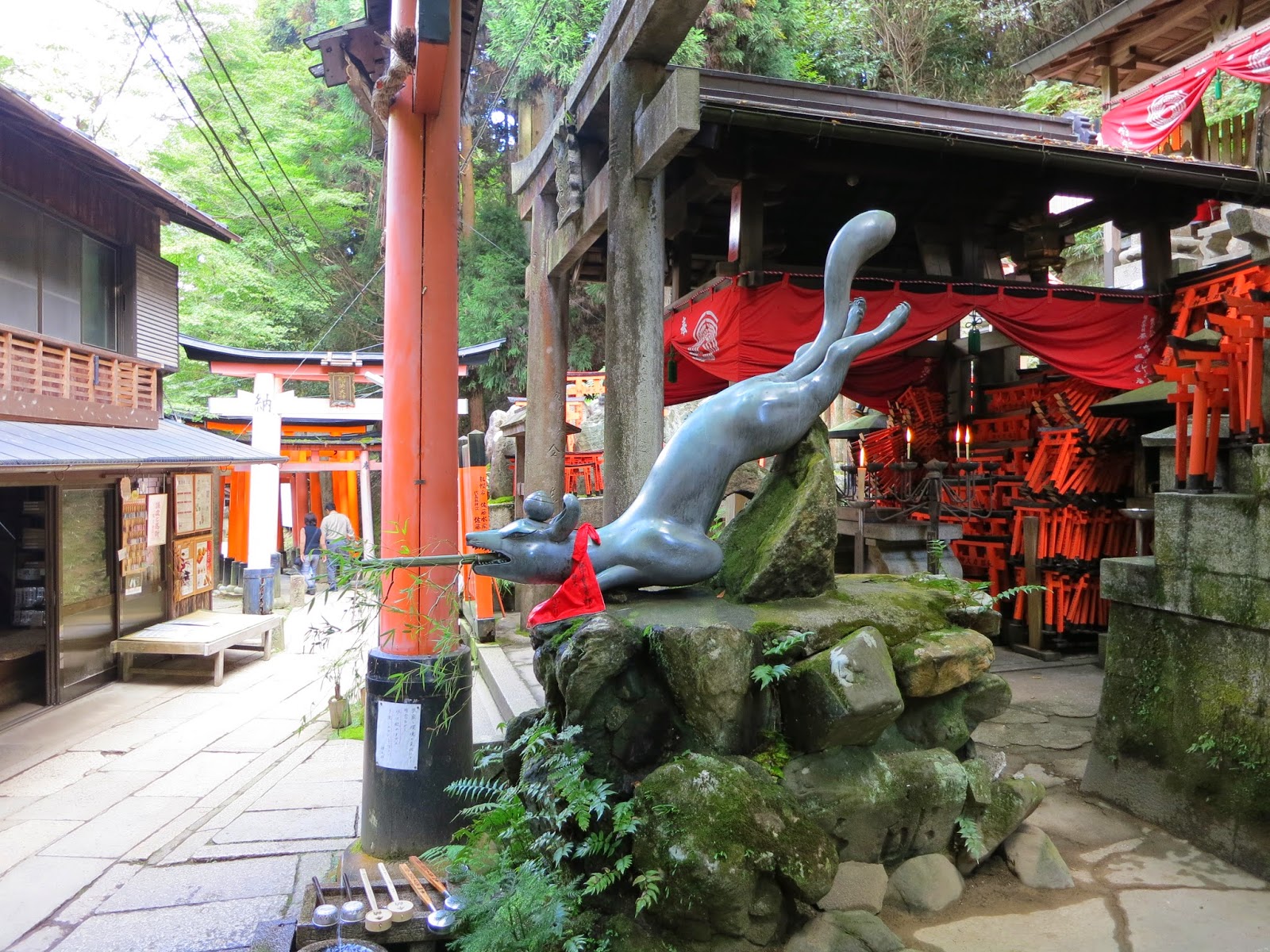In Japan, there are legends of creatures who can take the shape of anything from a beautiful woman to a simple, cracked clay pot. The Japanese Fox' is one such creature according to the mythology. The foxes use their gifts as either tool to test man, or trick to lead him astray, always guileful and mercurial beings in their dealings with humans. Most commonly they are associated with Inari, patron god/goddess of the rice harvest and of worldly fortune. As a result, good kitsune are revered as his/her messengers, almost to the point of godhood themselves at times.
As the writer, Lafcadio Hearn put it, "Vast is the
literature of the subject of foxes - ghostly foxes. Some of it is as old
as the eleventh century. In the ancient romances, and the modern cheap
novel, in historical traditions and in popular fairy-tales, foxes perform
wonderful parts. There are very beautiful, very sad, and very terrible
stories about foxes. There are legends of foxes discussed by great
scholoars, and legends of foxes known to every child in Japan."
-Lafcadio Hearn, Glimpses
of Unfamiliar Japan.
It was this premise, these stories and histories that
inspired my book, which in turn inspired me to finally take the leap and
travel to Japan. Among all the sights, sounds and places I wanted to
visit, one ranked above many of the others I've mentioned so far, or have yet
to mention. This place is Fushimi Inari Taisha, chief shrine of Inari
and the home of kitsune. Fushimi Inari is known for two things, the foxes and thousands upon thousands of torii gates which line the pathways across an entire mountainside that makes up the shrine.
If you’ve seen "Memoires of a
Geisha", you've seen the endless torii of Fushimi Shrine. I hadn’t, but the instant I saw them, I was
intrigued. A forest of the man-made
structures supposedly lined the entire mountain with little shops, smaller shrines
and warrens of paths here and there.
Everywhere one looks there are statues and shrines dedicated to kitsune.
Approaching from the station, you pass through a small neighborhood of wooden
buildings and modern convenience stores. As always with shrines, they eventually emerge from beneath a torii gate and pass from the modern into the more ancient. The path that leads up to the huge main gate is wide with cobblestones, and the first thing to greet you here is a bronze fox, frozen in mid leap with a hunk of golden grain in its jaws and a fiery jewel on his tail.
It seems to smile at you as you approach, its tail caught in the air
almost beckoning you approach.
From
there it’s a walk up to the Romon Gate, a spectacular structure of brilliant
orange and white protected by two stern bronze foxes on pedestals before
it. It was these two that first inspired
my book. They seem to stare down at all
who pass, their bodies paused on haunches with a key or jewel in their jaws
respectively. Just looking at them, you
feel you are being watched, or that perhaps they could leap to life at any
moment.
Beyond
them is the main portion of the shrine itself, leading up to a mountainside
that the whole of the temple encompasses.
I bought a fortune here and paused for reflection at the main offering
hall. I’d lobbed coins here and there at
shrines we’d passed, but this time I took my time for proper reverence. I prayed for our journey, for my creative
endeavors and for myself and my family.
Hearing the clanking of coins, the jingling of bells, and the shuffle of
people, it wasn’t hard to imagine whatever spirits lingered in the quiet hall
were still watching me. I imagine they
wondered what the heck I was doing there.
Romon Gate
Walking
up the hill, you find more foxes, and then inadvertently if you are local or
guest, from afar or near you stop dead still.
A line of torii appears in front of you and stretches up the mountain past the line of sight. It is a veritable forest of orange, like a tunnel, weaving in and out of a primeval forest. It is such an extraordinary sight because there are tens of thousands of these gates up the mountain, each emblazoned with kanji denoting the donating person or company and the year of the donation. You can walk for hours along the torii lined paths, and quickly lose your way entirely with no sense of rhyme or reason until you inevitably stumble on a little shop or wider space used for a shrine.
A line of torii appears in front of you and stretches up the mountain past the line of sight. It is a veritable forest of orange, like a tunnel, weaving in and out of a primeval forest. It is such an extraordinary sight because there are tens of thousands of these gates up the mountain, each emblazoned with kanji denoting the donating person or company and the year of the donation. You can walk for hours along the torii lined paths, and quickly lose your way entirely with no sense of rhyme or reason until you inevitably stumble on a little shop or wider space used for a shrine.
Colorful tassels and votive ema
One of many ornate lanterns that light the way at night.
Main shrine area
Torii path
One of many smaller shrines.
Fushimi is a veritable city within a city.
More foxes guarding a gate.
They peer from shadows all around.
From small to large from simple...
to ornate...
My
parents and I loved this place. We spent a
good few hours exploring the paths and tiny shrines that line the
mountain. If I may say one thing about
Fushimi, though, that is to its detriment, if it has tens of thousands of torii and an entire
mountainside of pathways.
Everywhere we looked were quiet places removed from everywhere else,
seemingly removed from the mortal world.
Foxes stood fearsome and proud on their
pedestals with sharp teeth borne to ward off evil spirits.
There
are also smaller torii which are the “ema” (prayer placards) at the
shrine. These people drape one on top of another in a chaotic mish-mash of preposterous perpetuity. The whole of the mountain is deeply shaded
by the forest, so here and there what light we had came from shafts or small
candles lit in the shadows of shrines.
It continued and created the unearthly feel of the whole place.
Fearsome guarding a single candle. No wind yet the thing flickered as we approached ... eerie.
Top of the mountain
We stopped at a tiny shop/shrine which sold dozens of these torii ema of various size, and
here we made the third big purchase of the trip, but perhaps the third most
important to me. The gentleman working
was very kind and extremely helpful. We
picked out a little shrine and he put my name, the date and some kanji to stand
for longevity. The way he worked was
extraordinary, such careful calligraphy on a small surface. At the very end, he clapped two small stones
together over it to make a spark, though the purpose of this I didn’t
understand. With votive in hand, we went
down the hill and emerged at a spot I knew from google images.
What I took to calling "The Laughing Fox"
It’s
a small shrine nestled against a mountain. Like everywhere in Kyoto, water
flows here in great torrents, and it crashes down among the shrines and
candlelit hollows guarded by fox statues.
Near this place is a fountain in the shape of a fox with mouth open. A sprig of bamboo is placed in the fox's mouth, and the way it trickles down almost sounded like laughter to me. It was a very unique experience, and perhaps
encapsulated our whole feeling of the place.
It was a short walk through quiet neighborhoods where cats rested on
places like tombstones against the hill.
I would not be surprised if these were graves of some kind. We saw no ghostly foxes, unfortunately, unless they had taken these feline forms. Still, I could almost sense a presence about the whole place. We were sad to leave and could have spent all day there, but our legs were tired from the long flights and endless paths.
The only bad part of our journey here was we had the
worst meal of our trip near the shrine.
Food is scarce at Fushimi, and bathrooms, well, we won’t go into
that. It did have good ice cream in a
shop on the way back to the hotel.
That
evening, I was in good spirits and not so tired, so I decided to explore. I did a slow walk through the city, taking
side streets upon side streets while trying to keep the hotel in view. This was easier said than done. The walkways and streets in Kyoto are a
warren of narrow passages, and buildings mesh one on top of the other. I discovered smaller shrines, quiet
neighborhoods and schools where children stared at me amid their play.
There were antique shops with prints and
objects that looked so ancient that I had to stop and stare, but know I’d never
afford them. I also found that there was a whole underground mall right underneath the hotel on a
strip of space right below the Kyoto City Hall.
It had shops, restaurants and curiosities of all kinds. I’d never seen so much in a space beneath a
street, and I quickly came back with my parents and we had dinner there.
It
is a surreal experience dining underground knowing you have streets and
buildings right on top of you. We ordered two full helpings of
spaghetti each to sate our appetites and then retired to the hotel to rest for
the following day.
On the whole, Fushimi was a spiritual and very religious experience as much as it was a sightseeing one. It was the first of many highlights of Kyoto, and it would not be the last time I visited there. The foxes would wait for my return.































